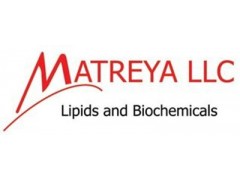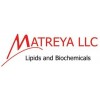      |

 通过认证 [诚信档案]
通过认证 [诚信档案]

| Cat. Number |
2035
|
| Chemical Name |
N-十六烷酰基 - 植物鞘氨醇 N-Hexadecanoyl-phytosphingosine
|
| Mol. Formula |
C34H69NO4
|
| Mol. Weight |
556
|
| Qty 1 |
5mg
|
| Appearance |
solid
|
| Application Notes |
98+%,TLC; identity confirmed by MS
|
| Synonym |
N-C16:0-Phytoceramide; N-Palmitoyl-phytosphingosine
|
| Solubility |
chloroform/methanol, 5:1
|
| Storage condition |
-20℃
|
| References |
Application Notes: Phytosphingosine is a long-chain sphingoid base having important cellular functions such as signaling, cytoskeletal structure, cellular cycle, and heat stress response. It is found largely in mammals, plants, and yeast. Phytosphingosine has seen much use in cosmetics due to its effects on the skin such as reducing inflammation by inhibiting the expression of the allergic cytokines IL-4 and TNF-α and the activation of the transcription factors NF-jB and c-jun in histamine-stimulated skin tissues.1 Phytosphingosine can lead to apoptosis via two distinct pathways and has been investigated as a possible cancer therapeutic treatment. Phytoceramides (fatty acid acylated to Phytosphingosine) are distributed at the microvillous membrane of the epithelial cells of the small intestine. Crypt cells and the adjacent epithelial cells produce phytosphingoglycolipids in much greater quantities than more differentiated epithelial cells.2 The kidney and skin also contain phytosphingoglycolipids although in much lower concentrations than in the small intestine. Phytoceramides form part of the water barrier lipids of the skin. 2-hydroxytetracosanoyl-phytoceramide has recently been shown to have immunostimulating effects in humans.3 Phytoceramides have lately been studied in regards to their role in the central nervous system and have been found to have important functions in neuroprotection.4
References: |